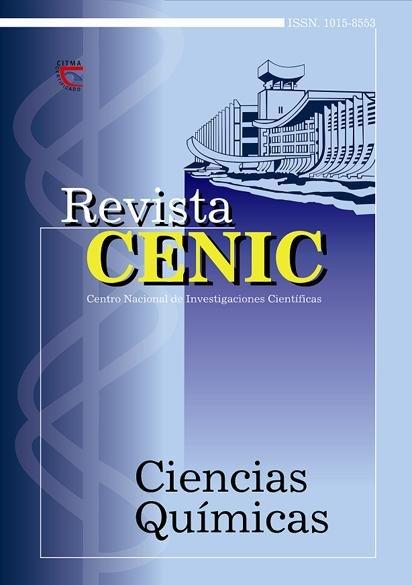Factors that influence the ozonation process of water in bubble columns
Abstract
The water treatment based on ozono employment every time receives a more international application, because of its excellent properties as germicide and oxidant. Bubble reactors have an extensive application, especially, bubble column. This paper presents the results on an experimental study in a bubble column 0.2 m diameter and 4 m height and under operating conditions similar to those installed in ozone water treatment systems in service in Cuba. The objective of this study was to obtain statistical models with independent variables for evaluating the effects of parameters such as: liquid flow rate (1-3 m3/h), gas flow rate (0,18-0,36 m3/h) and initial ozone concentration in the feed gas (12-18 g/m3). The volumetric gas liquid mass transfer coefficient and the dissolved ozone concentration at the column outlet were evaluated as dependent variables. An increment of gas flow rate results in an increase of the volumetric gas-liquid mass transfer coefficient. On the other hand, the liquid flow rate does not have an appreciable influence on this coefficient at values greater than 2 m3/h in this study. The results indicate that the ozone concentration in the feed gas has no effect on the volumetric gas liquid mass transfer coefficient but on dissolved ozone concentration at the column outlet. They also indicate that the decreasing of the liquid flow rate and the increasing of the gas flow rate are convenient to increase dissolved ozone concentration at the column outlet, even at the lowest ozone concentration value in the feed gas.

Downloads
Published
How to Cite
Issue
Section
License
Copyright (c) 2001 Copyright (c) 2001 Revista CENIC Ciencias Químicas

This work is licensed under a Creative Commons Attribution-NonCommercial-ShareAlike 4.0 International License.
Los autores que publican en esta revista están de acuerdo con los siguientes términos:
Los autores conservan los derechos de autor y garantizan a la revista el derecho de ser la primera publicación del trabajo al igual que licenciado bajo una Creative Commons Atribución-NoComercial-CompartirIgual 4.0 que permite a otros compartir el trabajo con un reconocimiento de la autoría del trabajo y la publicación inicial en esta revista.
Los autores pueden establecer por separado acuerdos adicionales para la distribución no exclusiva de la versión de la obra publicada en la revista (por ejemplo, situarlo en un repositorio institucional o publicarlo en un libro), con un reconocimiento de su publicación inicial en esta revista.
Se permite y se anima a los autores a difundir sus trabajos electrónicamente (por ejemplo, en repositorios institucionales o en su propio sitio web) antes y durante el proceso de envío, ya que puede dar lugar a intercambios productivos, así como a una citación más temprana y mayor de los trabajos publicados (Véase The Effect of Open Access) (en inglés).













